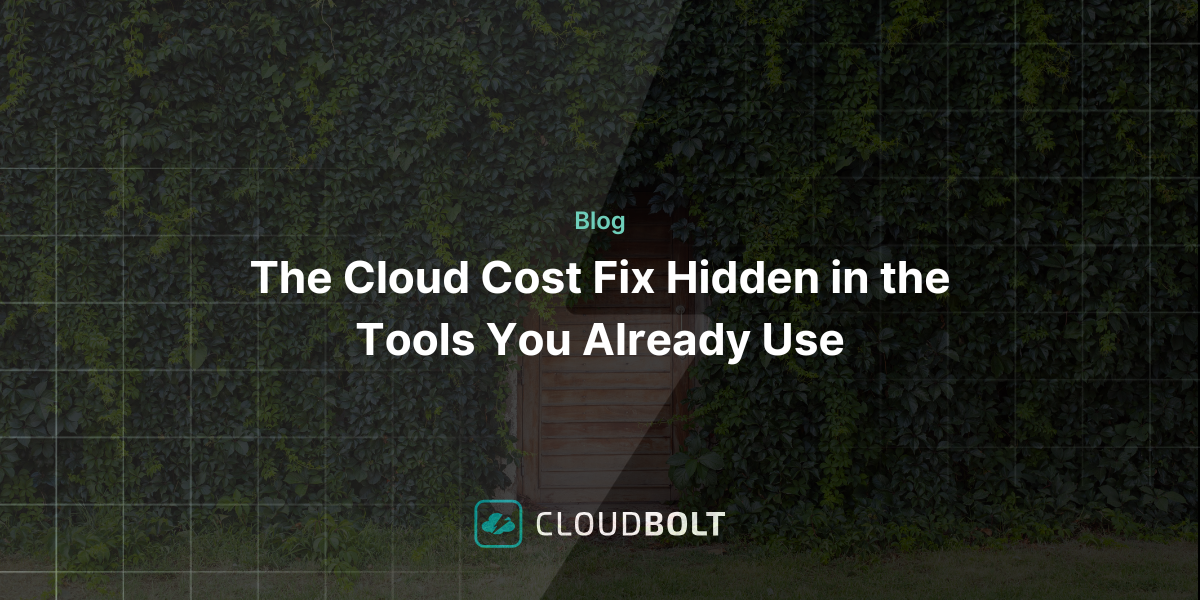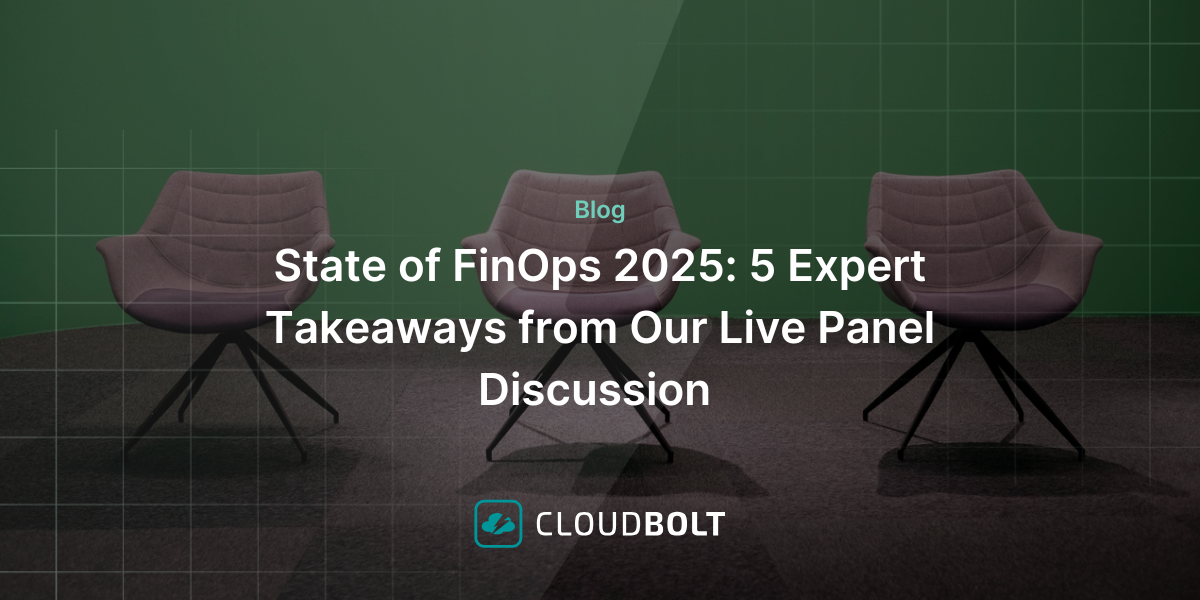Mastering FinOps Best Practices: A Comprehensive Guide to Optimizing Cloud Costs
FinOps is more than just a buzzword—it’s a necessary strategic practice that unites technology, finance, and business teams to ensure that every dollar spent on cloud services delivers maximum value. As cloud computing becomes increasingly integral to business operations, balancing cost with performance and scalability is challenging. FinOps best practices provide the framework to achieve this balance, turning cloud expenditures into strategic investments that drive tangible business outcomes.
This guide explores essential FinOps best practices, helping your organization manage cloud costs effectively and align cloud spending with your business objectives for long-term success and improved cloud ROI.
Top FinOps Best Practices to Maximize Cloud ROI
It’s essential to follow FinOps best practices to manage and optimize cloud costs effectively. These practices can guide your organization toward maximizing cloud ROI and ensuring that every dollar spent on cloud services delivers substantial value.

1. Achieve Cloud Cost Visibility
Visibility into cloud costs is the foundation of FinOps best practices. Without it, managing cloud expenses effectively is impossible. A multi-faceted approach that combines granular monitoring, tagging strategies, and advanced reporting capabilities provides comprehensive transparency and supports informed decision-making.
- Implement Granular Cost Monitoring: Use tools that offer hourly granularity to track cloud usage and expenses. This detailed monitoring helps you identify cost spikes, understand usage patterns, and pinpoint areas for optimization. By analyzing hourly data, you can uncover trends that daily or monthly reports might miss, such as unexpected usage surges during non-peak hours.
- Leverage Tagging Strategies: Properly tagging cloud resources with meaningful identifiers, like project names or department codes, is crucial for accurate cost allocation. Consistent tagging allows you to track spending effectively across different areas of your organization, ensuring that each team or project is accountable for its cloud usage.
- Advanced Reporting and Analytics: Utilize advanced reporting tools to gain deeper insights into cloud costs. Customizable dashboards, automated alerts, and trend analysis enable proactive cost management. With these tools, you can set up real-time alerts for unexpected spending, track cost trends over time, and make adjustments before costs spiral out of control.

2. Optimize Cloud Commitments
Optimizing cloud commitments is critical to reducing costs without sacrificing performance. You can significantly lower your cloud spend by strategically using long-term commitment options and leveraging discounted pricing models.
- Reserved Instances (RIs) and Savings Plans: Take advantage of long-term commitment options like RIs and Savings Plans, which offer substantial discounts compared to On-Demand pricing. Analyze your workloads to determine where these options can provide the most savings, especially for steady, predictable workloads. By committing to a certain usage level, you can reduce costs significantly, but it’s essential to regularly review and adjust these commitments to align with evolving needs.
- Spot Instances: For non-critical workloads, consider using Spot Instances. These can offer up to 90% discounts, though they come with the risk of being interrupted by the cloud provider. Spot Instances are ideal for tasks that can tolerate interruptions, such as batch processing or development and testing environments. To maximize savings, implement strategies that automatically shift workloads to Spot Instances when available, minimizing the impact of interruptions.

3. Continuous Rightsizing
Rightsizing is a FinOps best practice that aligns cloud resources with actual usage needs, avoiding overspending and under-provisioning.
- Use Monitoring Tools: Regularly assess your resource usage against baseline metrics to identify opportunities for downsizing or upsizing. This practice ensures you are neither overpaying for underutilized resources nor under-provisioning critical workloads. Continuous monitoring helps maintain cost efficiency as your cloud environment evolves, allowing you to adjust your resource allocation with actual usage patterns.
- Automate Rightsizing: Implement automated tools to adjust resources based on real-time usage data dynamically. These tools can automatically resize or scale resources up or down, optimizing performance without unnecessary costs. Automation reduces the manual effort required for rightsizing, allowing teams to focus on higher-level strategic tasks while maintaining efficient cloud operations.

4. Implement Cost Governance and Accountability
Cost governance is a critical FinOps best practice for controlling cloud expenses across the organization and ensuring that every dollar spent contributes to business value.
- Form Cross-Functional FinOps Teams: Create teams that include members from finance, IT, and business units. These teams should set shared goals and KPIs, aligning cloud spending with business objectives. Cross-functional collaboration fosters a culture of accountability, where each team understands how their decisions impact overall cloud costs and commits to cost optimization.
- Adopt a RACI Matrix: Clearly define roles and responsibilities using a Responsibility Assignment Matrix (RACI). This tool maintains accountability for decisions related to cloud spending. By assigning specific roles—Responsible, Accountable, Consulted, and Informed—across different tasks, the RACI matrix clarifies ownership and streamlines decision-making processes, reducing the risk of unchecked spending.

5. Automate and Schedule Non-Production Environments
Non-production environments like Dev, Test, and QA often run continuously, leading to unnecessary costs. Automating their management is a FinOps best practice that can yield significant savings.
- Use Scheduling Tools: Implementing scheduling tools that automatically shut down non-production environments outside business hours can lead to cost reductions of up to 70%, according to AWS. This way, resources are utilized only when needed, significantly optimizing cloud spend.
- Monitor Idle Resources: Regularly audit your cloud environment for idle or underutilized resources. Deleting or repurposing these resources can prevent waste and optimize your cloud spend. Automated tools can help identify idle resources and recommend actions so your cloud environment remains lean and cost-effective.

6. Conduct Regular Well-Architected Reviews
The AWS Well-Architected Framework offers a structured approach to evaluating and optimizing your cloud architecture. Regular reviews are essential for maintaining cost efficiency and aligning your cloud environment with best practices.
- Focus on the Five Pillars: Align your architecture with the pillars of Operational Excellence, Security, Reliability, Performance Efficiency, and Cost Optimization. These reviews will help you identify inefficiencies and opportunities for improvement. Regularly conducting Well-Architected Reviews ensures that your cloud environment is not only cost-effective but also secure, reliable, and scalable.
- Actionable Insights: Use the insights gained from these reviews to make targeted improvements to your cloud architecture. Whether optimizing resource allocation, enhancing security measures, or improving performance, these reviews provide a roadmap for continuous improvement, helping you maximize the value of your cloud investments.
Understanding The FinOps Lifecycle
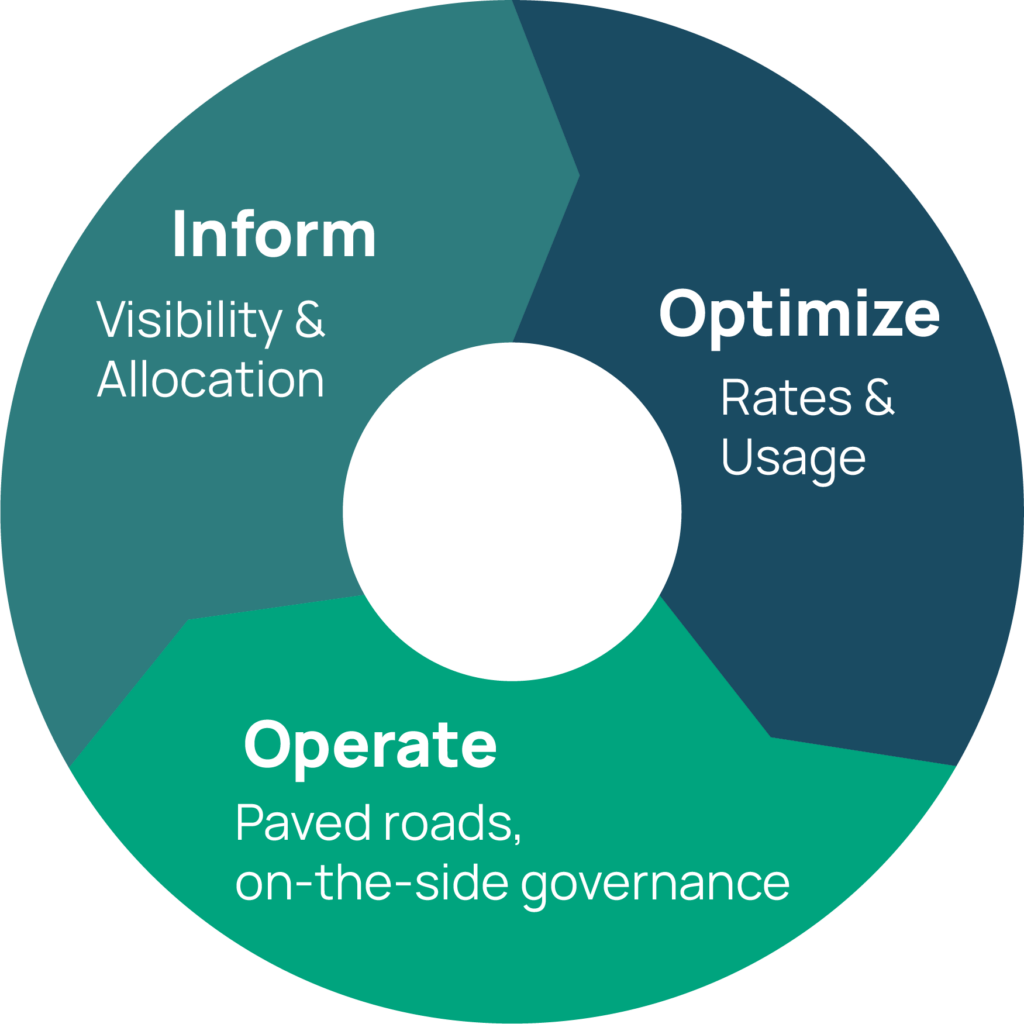
The FinOps lifecycle, as outlined by the FinOps Foundation, is at the heart of effective cloud financial management. It’s an iterative process that involves continuously refining strategies and workflows across three key phases: Inform, Optimize, and Operate. Each phase is crucial in helping organizations manage their cloud costs more effectively, aligning cloud spending with business objectives and driving maximum value.
1. Inform Phase: Gaining Insight and Visibility
The Inform phase focuses on building a clear and accurate picture of your cloud usage and costs. It’s about turning raw data into actionable insights that empower teams across the organization to make informed decisions that enhance overall cloud strategy.
- Key Activities: This phase involves gathering data on cloud costs, usage, and efficiency from various sources. Accurate allocation of cloud spending through tagging, accounts, or business rules is essential for generating meaningful reports. These reports help budget, forecast, and benchmark cloud performance against organizational goals.
- Outcome: The Inform phase aims to ensure that every stakeholder, from finance to engineering, has the visibility needed to understand the true cost of cloud operations. This phase sets the foundation for data-driven decision-making, enabling the organization to manage cloud costs proactively.
2. Optimize Phase: Enhancing Efficiency and Reducing Costs
After gaining insights and visibility in the Inform phase, the next step is to translate this understanding into actionable strategies during the Optimize phase. The Optimize phase is about identifying and implementing strategies to improve cloud efficiency and reduce costs without compromising performance or scalability.
- Key Activities: Optimization involves rightsizing underutilized resources, leveraging modern architectures, and automating waste elimination. This phase also focuses on taking advantage of cloud provider offerings like Reserved Instances (RIs), Savings Plans (SPs), and Committed Use Discounts (CUDs) to reduce rates and improve ROI.
- Outcome: Organizations can significantly enhance the value derived from their cloud investments by optimizing both cloud rates and usage. This phase requires close collaboration across teams to ensure optimization efforts align with the organization’s overall cloud value goals.
3. Operate Phase: Ensuring Continuous Improvement
The Operate phase integrates FinOps into your organization’s culture and daily operations. It operationalizes insights and optimizations from previous phases to continuously refine cloud financial management practices.
- Key Activities: This phase involves establishing cloud governance policies, compliance monitoring, and developing training programs and team guidelines. It also focuses on empowering individuals across the organization through automation and ongoing education, aligning everyone with the organization’s cloud financial goals.
- Outcome: The Operate phase fosters a culture of accountability and continuous improvement. Organizations can refine their FinOps practices, introduce new capabilities, and evolve their approach to cloud financial management by looping back to the Inform and Optimize phases.
Common Challenges in Implementing FinOps Best Practices
Implementing FinOps best practices is a journey that involves overcoming several challenges, especially in large and complex organizations. By understanding these challenges and applying thoughtful solutions, your organization can successfully integrate FinOps practices and realize the full benefits of optimized cloud financial management.
1. Siloed Teams
- The Challenge: In many organizations, different departments, such as finance, IT, and product teams, operate in silos. Each team focuses on its objectives without fully understanding how its actions impact the organization’s overall cloud costs. This lack of communication and coordination can lead to inefficiencies, redundant efforts, and missed opportunities for cost optimization. For instance, the IT department may not be fully aware of the financial implications of their cloud architecture choices. At the same time, the finance team may lack insight into the technical requirements driving cloud expenses.
- The Solution: To break down these silos, it’s essential to form cross-functional FinOps teams that include representatives from finance, IT, product, and other relevant departments. These teams should work together to set shared goals and KPIs that align with the organization’s overall business objectives. Regular meetings and collaborative tools can facilitate communication and align teams on cloud spending priorities. By fostering a culture of collaboration, organizations can ensure that every team is aware of the broader impact of their decisions on cloud costs and is actively contributing to cost optimization efforts.
2. Lack of Visibility
- The Challenge: Without clear visibility into cloud costs, it’s challenging for organizations to manage and optimize their cloud spending effectively. Many organizations struggle with fragmented data, where different teams use different tools and methodologies to track cloud usage and costs. This lack of a unified view can result in a reactive approach to cloud cost management, where issues are only addressed after they become significant problems. Understanding which projects, departments, or teams drive cloud costs can also be challenging without accurately tagging and allocating cloud resources.
- The Solution: Achieving comprehensive visibility into cloud costs requires a unified data collection and analysis approach. Organizations should implement robust monitoring tools that provide real-time insights into cloud usage and expenses. These tools should offer detailed reporting capabilities that allow teams to drill down into specific cost drivers. Furthermore, it’s crucial to implement a consistent tagging strategy across the organization so all cloud resources are accurately tracked and allocated. Regular audits of cloud costs and usage can help identify discrepancies and ensure that all teams adhere to best practices in cloud cost management.
3. Resistance to Change
- The Challenge: Transitioning to a FinOps model often requires a significant cultural shift within an organization. Teams that are used to working independently or are comfortable with their existing processes may resist the changes required to implement FinOps practices. This resistance can manifest in various ways, from reluctance to adopt new tools and processes to a lack of engagement in cross-functional collaboration. Overcoming this resistance is crucial for implementing FinOps successfully, as buy-in from all stakeholders is necessary to drive continuous improvement in cloud cost management.
- The Solution: To address resistance to change, it’s important to educate stakeholders about the benefits of FinOps and demonstrate the value it can bring to the organization. This can be achieved through workshops, training sessions, and case studies highlighting successful FinOps implementations. Additionally, focusing on quick wins—such as small, easily achievable cost savings—can help build momentum and demonstrate the effectiveness of FinOps practices. Leadership should also actively champion the transition to FinOps, providing the necessary resources and support to ensure that teams are motivated and equipped to embrace the changes. By creating a clear vision of the long-term benefits of FinOps and involving all stakeholders in the process, organizations can overcome resistance and foster a culture of continuous improvement in cloud financial management.
Elevate Your FinOps Strategy with CloudBolt
Leveraging a robust platform is crucial to successfully implementing FinOps best practices and achieving maximum ROI. CloudBolt’s comprehensive financial management platform offers a range of capabilities designed to support each phase of the FinOps lifecycle:
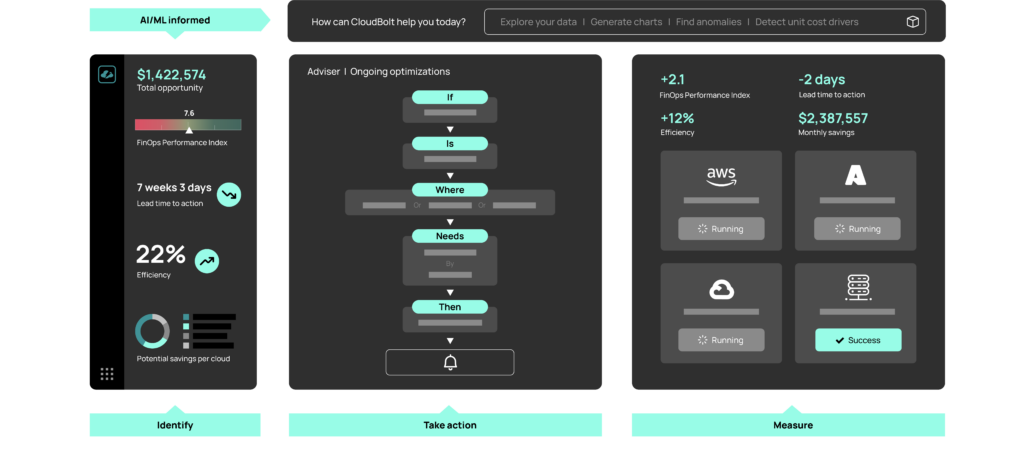
- Unified Visibility and Reporting: Gain comprehensive monitoring and tagging to provide a complete view of cloud usage and costs, essential for identifying optimization opportunities and making data-driven decisions.
- Cost Optimization and Rightsizing: Utilize automated tools to enable continuous refinement of your cloud environment, helping prevent overspending and ensuring efficient use of resources.
- Centralized Governance: Enforce consistent cloud management practices across all teams, ensuring alignment with organizational goals through a centralized view of spending and usage.
- Automation and Scheduling: Manage non-production environments efficiently with automation that schedules resources to run only when necessary, reducing unnecessary costs.
- Support for Well-Architected Reviews: Access insights that facilitate regular reviews of your cloud architecture, aligning your environment with FinOps best practices for cost efficiency and performance.
- AI-Driven Insights and Sustainability: Stay ahead of FinOps trends with integrated AI-driven insights and sustainability metrics, helping your organization remain competitive and environmentally conscious.
Conclusion
Mastering FinOps best practices is essential for organizations looking to optimize cloud costs while driving innovation and performance. By focusing on visibility, accountability, automation, and continuous improvement, your FinOps strategy can transform cloud spending into a strategic investment that fuels business growth.
By adopting these practices, leveraging emerging trends, and utilizing CloudBolt’s comprehensive platform, your organization can ensure that its cloud investments are not just cost-effective but also aligned with long-term business goals. If you’re ready to elevate your FinOps strategy and achieve maximum ROI, consider exploring how CloudBolt can enhance your cloud financial management. Contact us today for a personalized demo and see how CloudBolt can transform your cloud operations.
Related Blogs
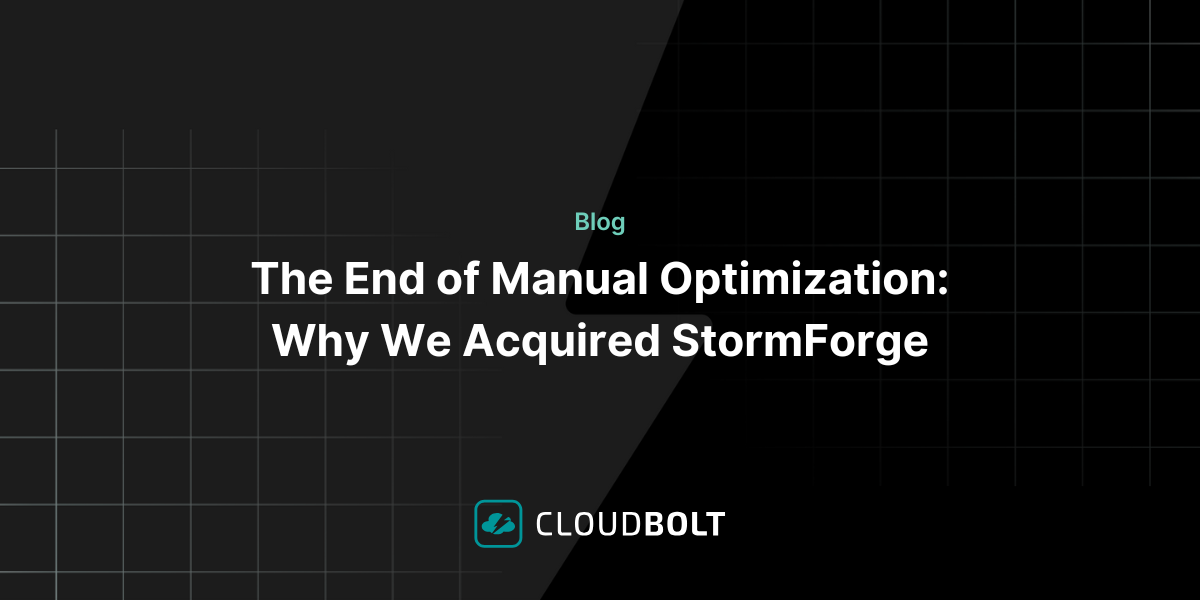
The End of Manual Optimization: Why We Acquired StormForge
Today is a big day for CloudBolt—we’ve officially announced our acquisition of StormForge. This marks a major milestone for us…
